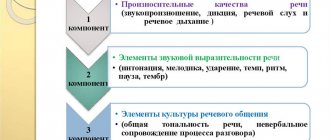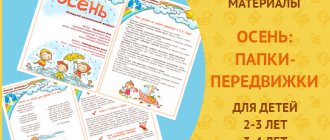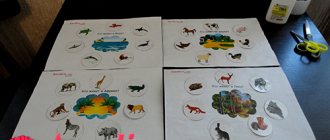Cards with images of mushrooms
As a rule, children know the following types:
Champignon. This mushroom is specially grown in greenhouses, since, unlike many of its fellows, it does not need proximity to trees. What two distinctive features of champignon do you need to remember? The first is the pink or dark brown color of the plates under the cap. The second is the reddish or yellow tint of the mushroom pulp. And, of course, you need to remember the unique aroma of this mushroom, which cannot be confused with anything else if you inhale it at least once.
Picture of champignon for children
Let us immediately remember what is the name of the double of this noble mushroom? Of course, the pale grebe. We look at its image, looking for distinctive features. The most observant will be able to note:
- white color of the plates under the cap;
- the presence of a specific sac at the base of the mushroom stalk.
We add that the flesh of the pale toadstool always remains pale when cut, which is why this mushroom got its name.
Picture of a toadstool for children
Let's move on and remember the following edible mushrooms:
Russula. This mushroom is distinguished by the brightness and variety of colors of its cap. It differs from toadstools in its thick stem, fleshy cap and fragile flesh. And it owes its name to the fact that it does not require long cooking, since it does not contain harmful substances.
Russula picture for children
Boletus. One of the brightest representatives of the union of mushrooms and trees. It is distinguished by the unusual (speckled) color of its stem and the tubular structure of its cap.
Picture of boletus for children
Boletus. From its name it is clear that this mushroom is especially friendly with aspen. And his cap is bright red - the same as aspen leaves in autumn.
Picture of boletus for children
Camelina differs from other mushrooms not only in its color, but also in the fact that its cut acquires a blue tint over time.
Picture of saffron milk cap for children
Honey mushrooms. Friendly mushrooms that grow on the stumps of cut down or dead trees. One of the latest mushrooms, appearing only at the beginning of autumn.
Picture of honey mushrooms for children
Butter. Unusual mushrooms growing in coniferous forests. Their cap is covered with a layer of oily liquid, which is how they got their name.
Picture of boletus for children
Milk mushroom. Everyone's favorite, the king of salted mushrooms. It has an unusual shape and a short leg. It is found in two forms - wet (its surface is covered with fringe and slightly damp) and dry - with a smooth cap.
Picture of breast milk for children
White mushroom, boletus. A noble representative of his species. It has a very thick, fleshy light-colored leg and a cap with a tubular bottom structure.
Picture of white mushroom for children
Chanterelles. Unusual red mushrooms, in which the stem smoothly turns into a cap with a wavy edge.
Picture of chanterelle mushrooms for children
Speaking about chanterelles, you immediately need to remember their dangerous counterpart - false chanterelles, and pay attention to their differences from real ones: unpleasant smell, bright color (with a reddish tint), smooth edges of the cap.
Let us immediately remember the most famous non-edible mushroom - fly agaric . Let's discuss where this name could come from. Children remember the fact that fly agaric is very dangerous for various insects, and our ancestors placed its mushrooms on the windows to prevent flies from flying into the house.
Picture of fly agaric mushroom for children
Every kid knows what this mushroom looks like, its color is so unique. Children will also be interested to know that the fly agaric cap can be not only red, but also brown or yellow.
Another very original inedible mushroom is tinder fungus . This is a perennial parasitic fungus that grows on a living tree or stump. There are quite a lot of different types. He is a forest orderly, decomposing organic compounds into mineral ones. Due to its beneficial properties, it is actively used in medicine. Interestingly, some of its species in some countries can be eaten subject to special preparation.
Picture of tinder for children
And finally, let's remember another unusual representative of the mushroom kingdom - the truffle. This delicious mushroom grows in deciduous forests, and under a layer of soil. Therefore, various methods are used to extract it. Pigs and specially trained dogs are especially good at finding truffles.
Picture of mushroom truffle for children
For greater clarity, we use a poster depicting all common edible and non-edible mushrooms, among which we find familiar ones, and also study previously unseen mushrooms.
Poster with mushrooms
Through a poster on which images of mushrooms are drawn, we smoothly move on to the next, reinforcing part of the lesson - pictures with mushrooms. Some of them display the main features of each mushroom, making it recognizable. On others we see the general outlines of mushrooms. You can offer the kids riddles or poems about mushrooms that match the pictures.
A picture for children of a mushroom (poems about mushrooms, riddles about mushrooms) are used to consolidate knowledge of the names of the main parts of the mushroom; with the help of them we try to remember how and in what parts, as well as in their characteristic habitat, the mushrooms that we studied today differ from each other.
Mushroom coloring pages
Mushroom picture
Mushroom coloring book
Fly agaric picture for children
Fly agaric coloring book for children
Autumn mushroom picture
Autumn mushroom coloring
After finishing the work, you need to consider all the results and even make an impromptu exhibition of mushrooms painted in bright colors.
Riddles about mushrooms
For example, you can offer the following poems and riddles:
My hat -
Where the needles are.
Glistens in the sun
It slips in your hands. (oiler)
With a thick leg, small,
He hid in the moss... (boletus).
If I get into the basket -
You will have a supply for the winter.
I taste very good!
Did you guess it? This is... (milk).
They lead a friendly round dance
Red sisters.
Everyone will immediately understand:
In front of him... (chanterelles).
Sits bravely on a stump
A bunch of brave guys.
Everyone can easily recognize them:
Who doesn’t know about….(again)?
All shades and colors
Those mushrooms have caps.
Collect them without haste,
Very fragile...(russula).
Look at the video riddles about mushrooms:
As a conclusion to the lesson, to include motor memory in the work, in the final part we invite the kids to work with coloring. The mushroom coloring page puts kids in a calm mood.
Lesson on the topic “Mushrooms” - we think, reason, find out
If you ask kids which group mushrooms belong to, they will no doubt answer – plants.
The following arguments can be given as evidence:
- sedentary lifestyle;
- passive nutrition (substances dissolved in water).
This is where you can give them a surprise by telling them that the structure of a fungal cell is more reminiscent of an animal cell - for example, a beetle or a scorpion, since it is covered with a chitinous (shell) shell. In addition, mushrooms cannot produce their own nutrients when exposed to sunlight, as plants do, which means this also serves as a distinguishing feature.
Ask the kids: where can you most often find a mushroom in the forest? Of course, under the tree. It is not for nothing that many mushrooms get their names from the names of their best friends - the trees under which they grow (aspen, birch). What explains this proximity? Just because mushrooms cannot provide themselves with all the necessary substances, as plants do. Therefore, many of them try to make friends with trees in order to get the products they lack through their roots.
Let's think about what large groups are all mushrooms divided into? Of course, there are edible and non-edible .
Edible and inedible mushrooms
Let the children remember the most famous representatives of each group, and you help them, armed in advance with photo cards depicting mushrooms.
For better assimilation and greater clarity, attach cards with the name of the group on the board or table: “Edible mushrooms” and “Inedible mushrooms.” After discussion, send each picture to the appropriate group. At the same time, it is better to study twin mushrooms in parallel, this will teach kids to be careful in the process of collecting them.
The video presentation “Edible Mushrooms” will help you in studying edible mushrooms:





